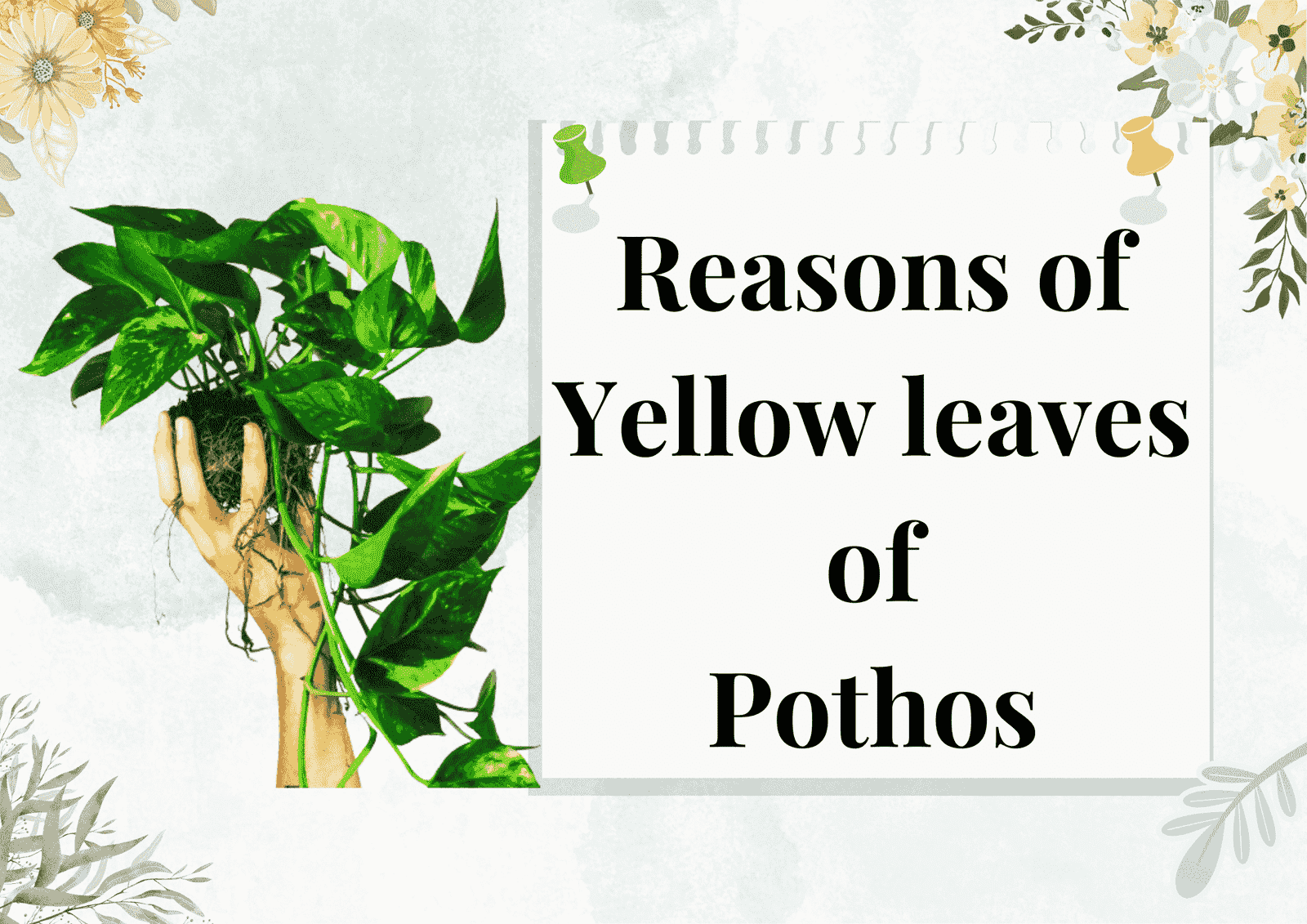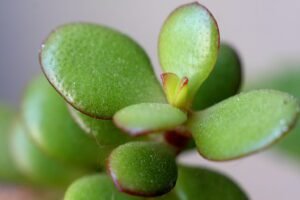Pothos, often called the “Devil’s Ivy,” is a favorite among plant enthusiasts—and for good reason! With its vibrant green leaves and forgiving nature, it’s a plant that thrives even with minimal care. But as easygoing as Pothos can be, it’s not entirely immune to problems. One of the most common issues you might encounter is the dreaded yellowing leaves. It’s a sight no plant parent wants to see, but don’t worry—yellow leaves don’t always spell disaster.
In this blog, we’re going to explore why your Pothos leaves might be turning yellow and, more importantly, how you can bring your beloved plant back to its lush, green self. Whether you’re a seasoned plant pro or a newbie still figuring out the watering schedule, you’ll find some practical tips here to help keep your Pothos happy and healthy. Let’s dive in!
Table of Contents
Understanding the Problem: Why Are Pothos Leaves Turning Yellow?
If you’ve noticed your Pothos leaves turning yellow, you’re not alone—this is a common issue that many plant owners face. Yellowing leaves can be a bit of a puzzle, though. They might signal something as simple as the plant’s natural aging process, or they could be a red flag indicating that something’s off with your plant care routine.
How then do you ascertain the true nature of the situation? Observing your Pothos more closely is the first step. Is the plant as a whole fading, or are only a few leaves? Are the leaves simply losing their color, or are they becoming yellow and dropping off? The easier it will be to identify the reason, the more details you observe.
In the following sections, we’ll break down the most common reasons for yellowing leaves in Pothos and give you the tools you need to diagnose and fix the problem. Whether it’s watering woes, lighting issues, or something else entirely, we’ve got you covered. Let’s start unraveling the mystery behind those yellow leaves!

Common Causes of Yellowing Pothos Leaves
Yellow leaves on your Pothos can be concerning, but the good news is that they’re usually a sign of something fixable. Let’s walk through some of the most common causes so you can figure out what’s going on with your plant and get it back to its vibrant green self.
1. Overwatering
Overwatering is probably the biggest culprit when it comes to yellowing Pothos leaves. Pothos are pretty tolerant, but they don’t like sitting in soggy soil. When the roots are constantly wet, they can start to rot, and that’s when you’ll see those yellow leaves. If you’ve been a little too generous with the watering can, it might be time to cut back and let the soil dry out a bit between waterings.
2. Underwatering
On the flip side, if you’re the forgetful type (no judgment here!), underwatering could be the issue. Pothos are tough, but they still need regular moisture to stay healthy. If the soil gets too dry, the leaves can start to yellow and wilt. It’s all about finding that sweet spot—consistent, moderate watering is key.
3. Improper Light Conditions
Light plays a big role in the health of your Pothos. These plants love bright, indirect light, but they’re also pretty adaptable. However, if they’re in a spot that’s too dark or too sunny, you might see some yellowing leaves. Too little light can cause the plant to stretch and lose color, while too much direct sunlight can scorch the leaves. Try moving your Pothos to a different spot and see if that makes a difference.
4. Nutrient Deficiencies
Just like us, plants need the right nutrients to thrive. If your Pothos isn’t getting enough of the good stuff, particularly nitrogen, the leaves can start to yellow. A balanced houseplant fertilizer can help give your Pothos the boost it needs. Just be careful not to overdo it—too much fertilizer can cause its own set of problems.
5. Pests and Diseases
Pests like spider mites and diseases such as root rot can also cause yellowing leaves. If you notice tiny critters or unusual spots on the leaves, pests might be the issue. On the other hand, diseases often show up as more widespread yellowing and wilting. Keep an eye out for any unusual signs, and take action as soon as possible.
6. Temperature Stress
Pothos are tropical plants, so they prefer warm, stable temperatures. If your plant is exposed to drafts, sudden temperature changes, or extremes—either too hot or too cold—it can stress the plant out, leading to yellow leaves. Try to keep your Pothos in a spot where the temperature stays consistent, and it’ll thank you.
7. Natural Aging Process
Yellowing leaves can occasionally be a normal aspect of a plant’s life cycle. Older leaves toward the bottom of the pothos plant may go yellow and eventually fall off. There is no need for concern as this is very typical. Your plant is most likely doing great if there are only a few leaves emerging sometimes.
Now that you know the common causes of yellowing Pothos leaves, you’re well on your way to figuring out what’s going on with your plant. Next up, we’ll dive into the solutions, so you can get your Pothos looking lush and green again!
Solutions to Revive Your Pothos
Now that we’ve covered why your Pothos leaves might be turning yellow, it’s time to talk solutions. The good news is that with a few simple adjustments, you can usually turn things around and get your Pothos back to its healthy, vibrant self.
1. Adjusting Watering Practices
If overwatering or underwatering is the issue, tweaking your watering routine can make a big difference. For overwatered plants, let the soil dry out completely before giving it another drink, and make sure your pot has good drainage. For underwatered Pothos, try to be more consistent—water when the top inch of soil feels dry. Remember, Pothos like their soil to be just right: not too wet, not too dry.
2. Optimizing Light Exposure
If your Pothos isn’t getting the right amount of light, a little rearranging can do wonders. Pothos thrive in bright, indirect light, so find a spot near a window where it gets plenty of light without being blasted by the sun. If your space is a bit on the darker side, consider using a grow light to give your plant an extra boost.
3. Fertilizing Your Pothos
Your pothos might suffer greatly from nutrient shortages, but a little fertilizer can brighten it up nicely. During the growing season (spring and summer), apply a water-soluble, balanced fertilizer to your houseplants every four to six weeks. Just be careful to dilute it, since too much fertilizer might do more harm than good to your plant. When it comes to feeding your pothos, less really is more.
4. Pest and Disease Management
If pests or diseases are behind those yellow leaves, you’ll need to act fast. For pests like spider mites, wipe down the leaves with a damp cloth and consider using an insecticidal soap or neem oil. For diseases like root rot, you might need to trim away affected roots and repot your plant in fresh soil. Keeping a close eye on your Pothos will help you catch problems early before they get out of hand.
5. Maintaining Proper Temperature
Since Pothos love warm, stable environments, keeping them comfortable can prevent yellowing leaves. Avoid placing your plant near drafty windows, air vents, or heating units where the temperature fluctuates. Ideally, keep your Pothos in a room that stays between 65°F and 85°F. Consistency is key!
With these solutions, your Pothos should start looking better in no time. Just be patient—plants don’t bounce back overnight, but with a little care and attention, your Pothos will be thriving again soon!
Preventive Care Tips for Healthy Pothos
Now that you’ve tackled the yellowing leaves, let’s talk about keeping your Pothos in top shape moving forward. A little preventive care goes a long way in ensuring your plant stays lush, green, and happy. Here are some simple tips to keep your Pothos thriving.
1. Routine Checks
It’s a good idea to give your Pothos a quick once-over every week or so. Check for yellowing leaves, pests, or any signs of distress. Early detection is the key to preventing minor issues from turning into big problems. Plus, regular attention helps you bond with your plant, and who doesn’t love spending a little extra time with their leafy friend?
2. Proper Watering and Drainage
Getting the watering just right is crucial. Stick to the routine you’ve established—water when the top inch of soil is dry, and make sure your pot has proper drainage. Pothos hate sitting in water, so avoid any saucers filled with excess water. You can even rotate your plant when you water it to ensure even growth on all sides.
3. Light and Location
Your Pothos will thank you for keeping it in a spot with consistent, indirect light. If you notice one side of the plant leaning towards the light, rotate it every couple of weeks so all sides get equal exposure. And remember, while Pothos are pretty adaptable, they do best when they’re not subjected to extreme light changes or drafts.
4. Pruning and Cleaning
Pruning isn’t just about keeping your Pothos looking neat—it also promotes healthy growth. Trim away any yellow or dead leaves to redirect the plant’s energy to the healthy parts. If your Pothos is getting a bit leggy, don’t be afraid to trim back the stems. And while you’re at it, wipe down the leaves with a damp cloth to remove dust. Clean leaves can breathe better and photosynthesize more efficiently.
5. Repotting and Soil Management
Your pothos can overrun its container as it grows. It might be time to repot if you notice the plant isn’t growing as aggressively or if you detect roots emerging from the drainage holes. Select a pot that is one size larger and fill it with clean, well-draining soil. Repotting allows your pothos plant more space to grow and thrive.
By following these preventive care tips, you’ll help your Pothos stay healthy and avoid future yellowing leaves. Plus, with a little regular attention, you’ll enjoy a gorgeous, green plant that brightens up your space year-round. Happy growing!
| You Can Also Visit our Other Blog Post on “Pothos” |
| How to Propagate Pothos plants: Easy Guide |
| Are Pothos Toxic To Cats and Dogs? |
| Marble Queen Pothos Care: Your Ultimate Guide to Thriving Indoor Greenery |
| How to Grow and Care Neon Pothos: Easy Guide |
Conclusion
Yellowing leaves on your Pothos might be a bit alarming at first, but they don’t have to be a permanent problem. By understanding the common causes—like overwatering, improper light, or even a nutrient deficiency—you’re well-equipped to tackle the issue head-on. And with a few simple adjustments, your Pothos can bounce back to its beautiful, green self in no time.
Remember, plants are like people—they thrive when given the right care and attention. So, whether you’re tweaking your watering routine, finding the perfect spot with just the right amount of light, or giving your plant a little extra TLC, each step you take brings your Pothos closer to being the showstopper it was meant to be.
Keep an eye on your plant, make adjustments as needed, and don’t forget to enjoy the process. After all, caring for plants is as much about the journey as it is about the destination. Here’s to healthy, happy Pothos that bring a little extra green into your life!




